Home > Ideas > Subtle Marketing Techniques Used by Amazon Prime (Mar '21)
Subtle Marketing Techniques Used by Amazon Prime
This is the text version of this infographic.
One of the problems with advertising is that it's an expensive way to acquire customers individually. You can overcome this by setting up your product so that customers acquire more customers for you. This can work especially well for internet companies, as there's often a good reason for users to invite other users. But what if there isn't a natural invite flow? Amazon Prime shows how it can be done. The core product isn't that social, so they layer it with subtle strategies that make it powerfully viral. In the following infographic I explain a few of these strategies and how they work.
Summary
| technique | perception | reality |
|---|---|---|
| Branded trucks | Billboard on wheels | The Jones’ Effect |
| Bundled streaming | Free entertainment | Viral brand marketing |
| Ads about shows | TV / film trailers | Viral seeds |
Technique no. 1: Prime-branded delivery trucks
To get someone to desire something, you need to show them somebody else desiring or owning that thing. By branding their delivery trucks with Prime, Amazon gives you a model for your desire; your neighbor.
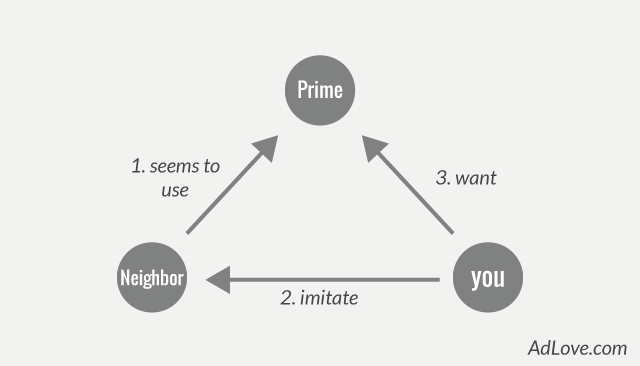
This trick gives a social dimension to a transaction that would otherwise be hidden. It’s subtle enough to stay out of conscious thought, which lets it operate effectively on a relationship already prone to imitation.

The effect is multiplied because of the scale that Amazon operates on. On any given day they deliver multiple times on your street, giving you many models to copy.
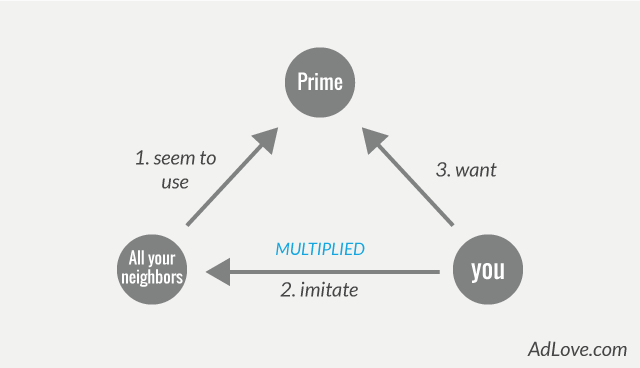
Technique no. 2: Bundled streaming service
Packaging TV with Prime lets the free delivery subscription piggyback on the viral nature of entertainment. Using the same name for both lets the free delivery part gain awareness every time someone talks about a TV show.
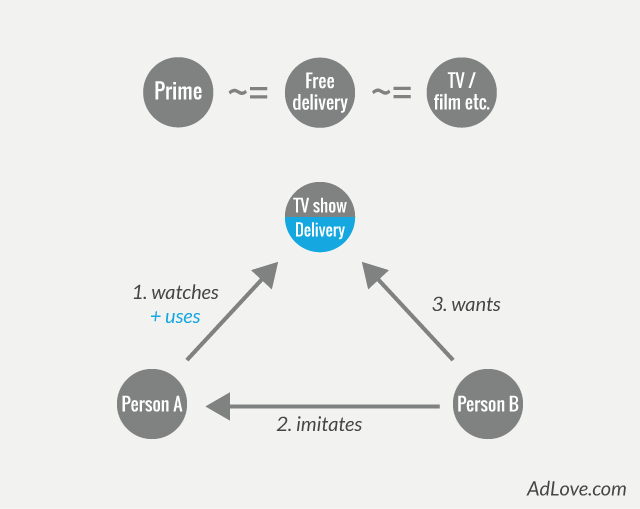
This lets Amazon avoid pushing ads about free delivery that you don’t want to see. Instead they can invest in creative content that you actually want.
Technique no. 3: Ads promoting shows
When companies spend money on ads to sell you stuff, it doesn’t signal quality because you sense they’re only spending to get a return. But when the thing being advertised is free (like shows are for Prime subscribers) it has the opposite effect.
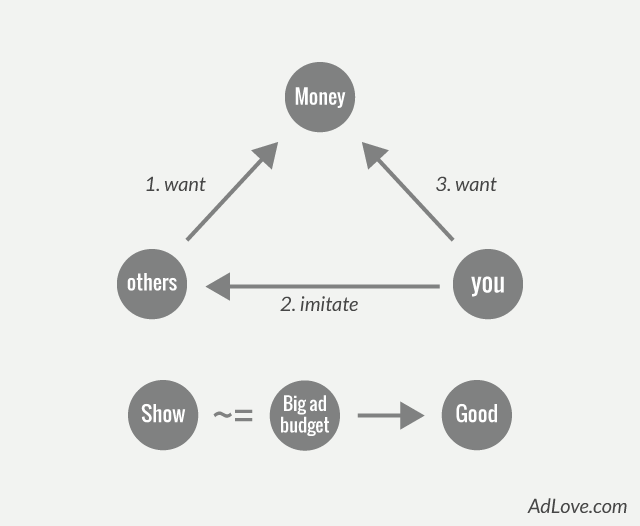
Using ads to promote shows works as a kind of discovery tool to existing subscribers. These subscribers go on to promote content virally to people in their network. The result is much more compelling than if Amazon had tried to sell non-customers directly.
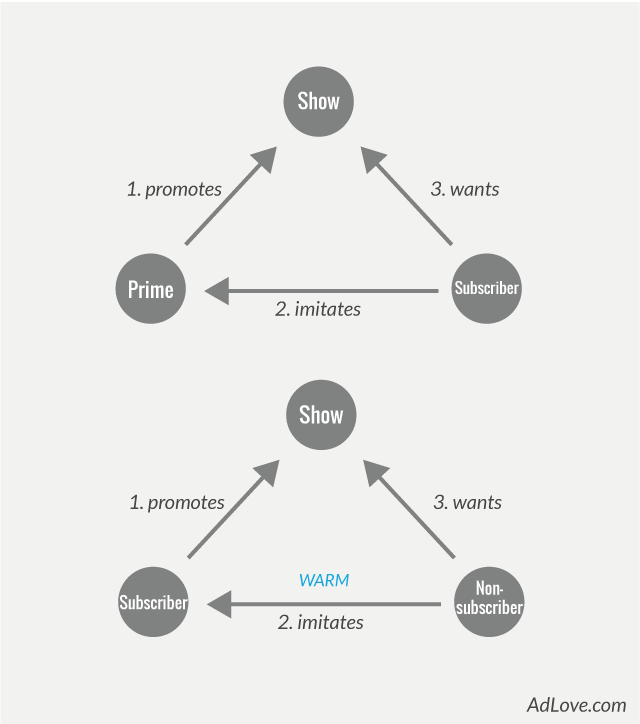
Conclusion
You’ll notice that in each of the above cases, the effect compounds with scale. The more neighbors on Prime, the more powerful the Jones’ effect. The more friends on it, the more viral marketing you get. And the more people on it in general, the more useful the ads about shows become. Structures like these make ads really powerful. Every dollar spent gets amplified and sets you up for the future.
by Aftab Singh, Founder of AdLove (@affalytics) | Ideas home
